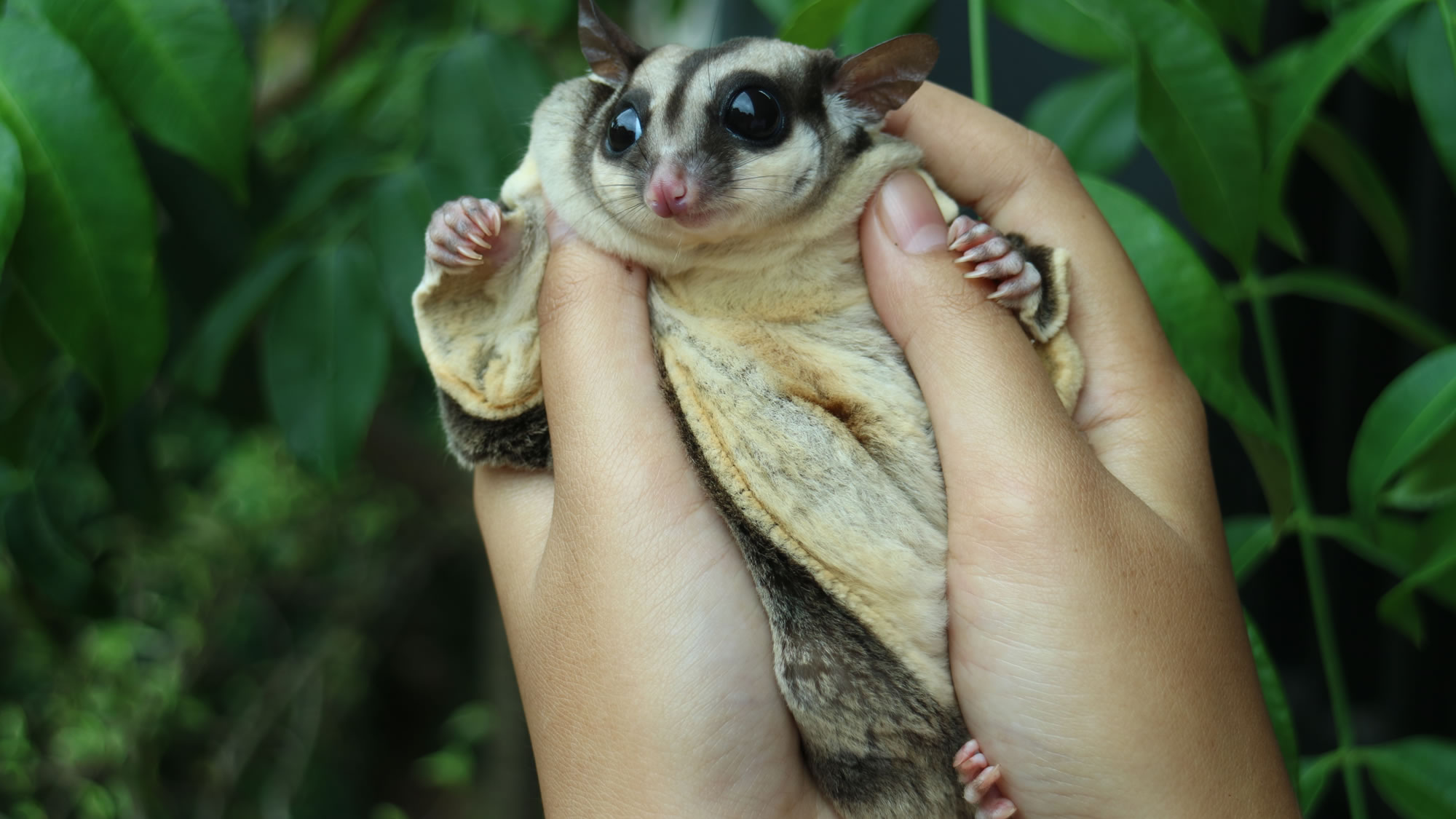Mahogany Glider
While its close cousin the sugar glider is common across the whole of Queensland, the more elusive mahogany glider (Petaurus gracilis) resides exclusively in the woodlands of tropical North Queensland.
Now, with its habitat under threat from land clearing and development, the mahogany glider is regarded as one of Australia’s most endangered species – prompting us to act to create sanctuaries for this high-flying cutie in Ant Plant East, Ant Plant West and Cassowary Connection Nature Refuges.
Make your impact
- Secured core habitat for the mahogany glider through the purchase of more than 100 hectares of land near Tully and Mission Beach through our Revolving Fund, and protected it under nature refuge Agreements.
- Partnered with Girringun Rangers and Terrain NRM to conduct research on the mahogany glider population of Ant Plant East Nature Refuge and Ant Plant West Nature Refuge.

- Ant Plant East Nature Refuge and Ant Plant West Nature Refuge will remain a haven for mahogany gliders which is listed in the top 20 threatened species in Australia’s Threatened Species Strategy
- Re-discovered only as recently as 1989, there is still much more we need to know about the mahogany glider in order to ensure its survival.
- Capturing information on the mahogany glider – its numbers, how it moves in its environment, and its eating and breeding habits – is vital to successful and targeted habitat restoration.
- Conservation experts from QTFN and our research partners are using a combination of safe trapping techniques and placement of wildlife cameras to map, monitor and study this precious marsupial.

Our work
- Secured core habitat for the mahogany glider through the purchase of more than 100 hectares of land near Tully and Mission Beach through our Revolving Fund, and protected it under nature refuge Agreements.
- Partnered with Girringun Rangers and Terrain NRM to conduct research on the mahogany glider population of Ant Plant East Nature Refuge and Ant Plant West Nature Refuge.

Our impact
- Ant Plant East Nature Refuge and Ant Plant West Nature Refuge will remain a haven for mahogany gliders which is listed in the top 20 threatened species in Australia’s Threatened Species Strategy
- Re-discovered only as recently as 1989, there is still much more we need to know about the mahogany glider in order to ensure its survival.
- Capturing information on the mahogany glider – its numbers, how it moves in its environment, and its eating and breeding habits – is vital to successful and targeted habitat restoration.
- Conservation experts from QTFN and our research partners are using a combination of safe trapping techniques and placement of wildlife cameras to map, monitor and study this precious marsupial.


